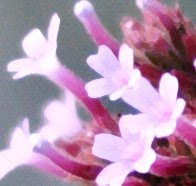Notably, I like that Lr3 is both a library tool and an editing tool. Adding keywords and bulk adjusting photos makes sense, especially if I'm going to be taking a lot more photos in the years to come.
Here's a fun tool I played with - spot removal. This was a pic of Maya looking down at us from the balcony, but she had some serious eye goop going on. Well, that's not a problem! Sport removal works by selecting a small area and the letting you copy a different part of the image to that area. I would have thought that this would look lousy on anything other than a regular surface, but I used it on a border of fur and skin and had no problems. I used the spot removal tool at the same time I edited white balance and exposure, and here's the result (look at the left eye):
 |
| Original processed JPEG (from camera) |
 |
| Processed w/Lightroom and using the spot removal tool |











